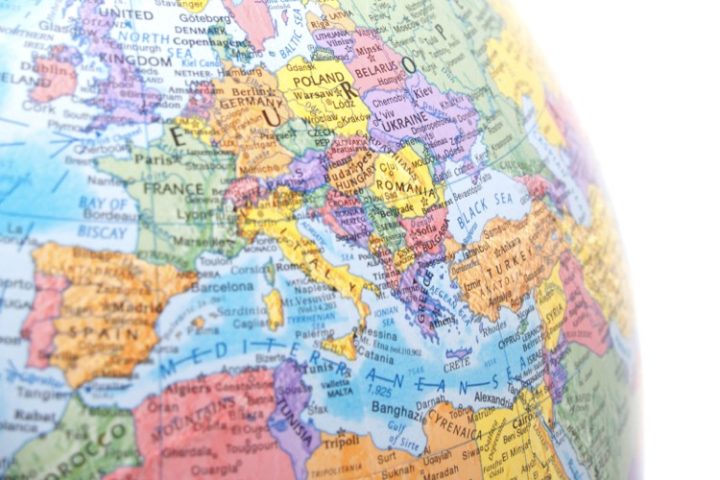
Americans who plan to travel soon, and who are worried about catching COVID-19, would be interested to learn that the U.S. Centers for Disease Control and Prevention (CDC) has classified most of the world’s countries based on the level of risk of getting the disease. One would assume that the “safest” countries to visit would be those with the highest vaccination rate, and, accordingly, that the countries the CDC recommends avoiding would be those that did not excel at getting their populations jabbed. But it is actually the other way around.
According to the vaccination rate tracker by John Hopkins University, there are currently 27 countries that have gotten 50-plus percent of their residents fully vaccinated. Of them, 20 countries are considered by the CDC, as of its August 2 update, to be either “very high” (12 countries), or “high” risk (8 countries) of getting COVID-19.
According to the CDC, the “very high” risk level refers to the countries Americans should avoid visiting. “If you must travel to these destinations, make sure you are fully vaccinated before travel,” the CDC recommends. Among them are Malta (77.51 percent inoculated), United Arab Emirates (72.37 percent), Seychelles (70,22 percent), Uruguay (65.64 percent), Bahrain (64.72 percent), Mongolia (61.85 percent), Spain (59.55 percent), Portugal (58.69 percent), United Kingdom (58.16 percent), Ireland (57.33 percent), and Maldives (52.44 percent).
Then there’s the “high” risk category. “Make sure you are fully vaccinated before traveling to these destinations. Unvaccinated travelers should avoid nonessential travel to these destinations,” warns the CDC. The following countries with high vaccination rates made it to the list: Iceland (70.49 percent), Qatar (63.66 percent), Belgium (61.73 percent), Canada (61.17 percent), Israel (59.54 percent), Denmark (57.43 percent), Italy (54.38 percent), and Luxembourg (52.86 percent).
Germany (53.6 percent) and Austria (53.19 percent), other high-vaxxers, made it to the “moderate” risk list for visiting, which means, per the CDC, one should get vaccinated. If not, those “unvaccinated travelers who are at increased risk for severe illness from COVID-19 should avoid nonessential travel to.”
Finally, it is considered relatively “safe” to travel to Singapore (63.44 percent) and Hungary (56.04 percent). That is, if one qualifies for one of the narrow categories that are allowed to travel to Singapore which imposed harsh travel restrictions to the country.
Finally, San Marino and Bhutan, which have gotten 69.35 percent and 62.04 percent of their citizens inoculated, are considered “unknown” risk of infection by the CDC. Meaning: “Avoid travel to these destinations. If you must travel to these destinations, make sure you are fully vaccinated before travel.”
Overall, “make sure you are fully vaccinated before travelling” is a standard recommendation for every category of countries.
If one looks for the “low” risk countries, it may come as a surprise that China is one of them, even though just 15.98 percent of Chinese citizens are vaccinated against COVID. Here’s another head-scratcher: The CDC also informs that non-U.S. citizens who were physically within China (except for Hong Kong and Macau) and other listed countries within the last 14 days are prohibited from entering the United States. In other words, Americans traveling to China are at low risk of getting COVID-19, but Chinese traveling to America is a no-go because such entries, presumably, endanger the health of Americans.
The same discrepancy is seen in such “low”-risk European countries as Poland (46.52 percent), Romania (25.32 percent), Hungary (56.04 perent), Bulgaria (14.73 percent), Bosnia and Herzegovina (6.98 percent), and a few others. Americans can visit them, but not the other way around — since those countries are a part of the European Schengen area that is on a “can’t-come-to-America” list.
Australia, which deploys an army to make sure half of its citizens comply with lockdown and facemask orders, is a “low” risk country. It is indeed so, since its seven-day average COVID-19 rate, as of August 3, was 260 cases in a country with a population of nearly 26 million people. The vaccination rate in the Land Down Under is 16.77 percent. Then again, good luck getting there since Australia has closed its borders for most travelers, Americans included. Same goes for New Zealand; it is “low”-risk and low-vax (15.65 percent), yet closed for most.
Surprisingly, there are many African countries that made it to the “low” risk list. They also, as one may guess, did not vaccinate much of their people, or, to be more precise, barely vaccinated any. Among them are Sudan (0.43 percent), Gabon (1.95 percent), Ghana (1.33 percent), Mali (0.28 percent), and Nigeria (0.7 percent). There are more countries in this category, such as Burkina Faso and Côte d’Ivoire, but John Hopkins does not provide any data on them. The fact that one may relatively “safely” travel to many African countries suffering from what the Africa Centre for Disease Control (Africa CDC) calls a “syndemic,” or a combination of infectious diseases, such as Malaria, HIV/AIDS, and Tuberculosis, yet should avoid traveling to such “advanced” countries as the UK, Spain, or Ireland may trigger a cognitive dissonance.
Overall, the CDC is yet again raising concerns as to whether it actually believes what it is preaching so aggressively. According to the CDC, we must follow the science and take the vaccine since it will get us back to normal. Also, the CDC claims, the vaccines are safe and effective. But since the CDC Director Rochelle Walensky admitted herself that one still may get COVID while being fully vaccinated and even spread infection to others, then the travel recommendations make total sense.




